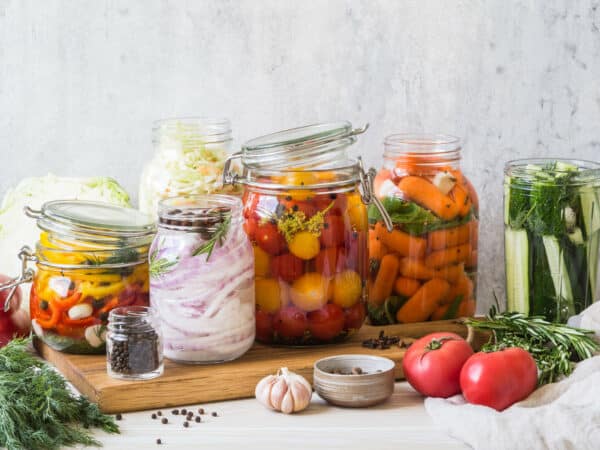Bread is healthy in many ways. It helps to balance our diet thanks to a high starch (complex sugar) intake and provides many minerals, vitamins, and plant-based proteins. Its fiber content is also an asset for healthy bowels.
What’s in bread?
As we mentioned before, bread is simple, which is why it has become such a staple across the globe. In its most basic form bread consists of only four essential ingredients:
- flour,
- water,
- yeast or sourdough,
- salt.
So, what roles do these ingredients have in making bread?
- Flour is rich in gluten which makes bread light.
- Water wets the flour. With water, the starch swells and gluten becomes soft (its temperature should not exceed 30°C).
- Salt contributes to the flavor of the bread and improves the workability of the dough. It is indispensable in bread making.
- Yeast is a microscopic unicellular fungus called Saccharomyces cerevisiae. This is the ingredient that makes the dough rise. It is present in all sourdoughs.
Yeast: a key ingredient in making bread!
Yeast is a very special ingredient in making bread. Without yeast, there is no bread! Let’s learn why yeast is so indispensable for bread.
Firstly, yeast produces carbon dioxide and modifies the physical properties of dough through the action of enzymes, which starts the essential fermentation process in bread making. This fermentation process has three distinctive actions which affect the bread dough:
- The yeast ferments sugars, which it directly assimilates and are naturally present in the flour (about 1.5% of its weight).
- The second action corresponds to the fermentation of a specific sugar found in flour called maltose. Maltose results from the action of certain enzymes, amylases, on flour starch and which is damaged when milling the wheat. The action of flour amylases is completed by that of another yeast enzyme, maltase, which then breaks down maltose to produce the simplest sugar form, glucose. Glucose is transformed by yeast into carbon dioxide (which gives volume to bread and the honeycomb shape of the crumb) and into alcohol (evaporated when baked). Yeast also produces aromatic compounds that contribute to the aroma and taste of bread.
- The third action occurs during baking. Fermentation is activated by heat and ends when the temperature reaches 50°C.
Make your own bread!
Ready to make your own tasty bread? Just follow this easy step-by-step recipe!
Utensils:
- 1 large mixing bowl
- 1 plastic wrap
- A baking sheet
- 1 sharp knife
Ingredients:
- 500g bread flour
- 1x 5g sachet of instant dried yeast or 1/2 cube of fresh yeast (21g) or 25 ml liquid yeast
- 300ml lukewarm water
- 1.5 teaspoons (10g) salt
Note: if using dried yeast you need to dilute it before using it in a little lukewarm water.
Instructions:
- Mix all the ingredients in your mixing bowl.
- Knead the dough by hand until you obtain a smooth dough that does not stick to the sides of the bowl.
Pro Tip: knead the dough rapidly with a spatula, let it rest for 10 minutes then work it for a further 1 minute.
- Cover the dough with a clean towel and cover that with plastic wrap to prevent it from drying out. Let the dough rise for 1 to 1 ½ hour, depending on the temperature of your kitchen.
Pro Tip: to guarantee more flavor, let the dough rest overnight in your refrigerator. Remove the dough from the refrigerator and let the dough come to room temperature (1hr usually) before moving to the next step.
- Divide the dough into two balls.
- Place dough halves on a prepared baking sheet. Flour your hands and shape them into 2 loaves with some space in between so they have room to grow. Loosely cover again with a towel and plastic wrap and allow to rest for 1 ½ hour. The dough should roughly double in volume.
- While the dough is rising, preheat your oven to 250°C (thermostat 7-8).
- Remove the towel and plastic wrap and use a sharp knife to make three shallow cuts in the dough.
- Put the baking sheet with your dough in the oven and let it bake for 10 minutes at 250°C and then 35-40 minutes at 200°C.
Pro Tip: For a golden and crusty loaf, spray the dough with water just before putting it into the oven.
- Once the bread is baked, leave to cool before tasting.
Once your bread is cool enough enjoy the wonderful and tasty bread that you made!
You are now a pro at making bread and will never be hungry!




